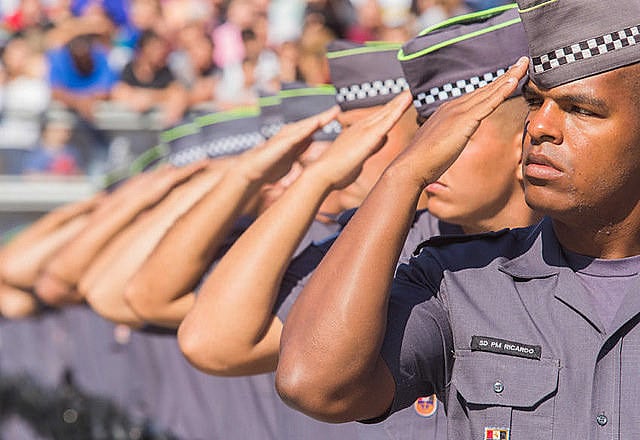Young black men are disproportionately killed by police in São Paulo, one of the richest states in Brazil and Latin America, according to a study released last week by Samira Bueno, a sociologist and chief executive officer of the Brazilian Forum on Public Security.
The survey looked into 3,107 records in 20 cities in the state of São Paulo between 2013 and 2016. Bueno also interviewed 16 ex-police officers at the Romão Gomes military prison. She found that 67% of the people killed by police officers in the period were black or mixed-race, while 16% were under 17 years of age.
Valdênia Paulino Lanfranchi, a human rights activist and member of the Sapopemba Human Rights Center who works especially with youth, points to the fact that a significant number of victims are teenagers, who should be protected by the State. “The results of this study are daunting. The answer that São Paulo state authorities have been giving to this issue of lethal violence is daunting,” she says.
Disproportionate rates
The research shows that, for every 1,000 teenagers arrested, 6.1 were killed by law enforcement officers. The number of adults killed by police officers is 3.4 for every 1,000 individuals who are arrested.
While the number of killings by police is on the rise, police officer deaths are steadily dropping in the state. In 2016, 856 people were killed by police, while in 2017 the number of victims was up to 943. Meanwhile, the number of police officers killed dropped from 80 in 2016 to 60 in 2017.
Bruno Paes Manso, a journalist and researcher at the Violence Research Center of the University of São Paulo, argues that the issue of police brutality should be one of the top priorities to be tackled by law enforcement agencies – which still see these killings as a matter of preventive measures, not a political problem.
“As the overall number of deaths has dropped, deaths by police now represent nearly 20% of total killings in São Paulo. Murder rates have dropped over the last few years, while fatal police violence rates remain high,” he says.
Bueno’s research shows the youngest victims of police killings are 10-11 year old boys who live on the outskirts of São Paulo. Lanfranchi argues that police image among residents in these areas is negative “because you don’t have a preventive police force, only reactive policing.”
She points out that, in these areas, residents have firsthand experience witnessing police corruption, where officers who kill people are also spotted at drug-dealing locations or collecting bribes from businesses to provide “protection.”
Genocidal policy
Manso argues that, while the police are defensive when confronted with high killing rates, society at large is somehow complacent in face of these deaths.
“The big problem ends up being the stigma carried by these groups, these young men who live on the outskirts, who are seen as the bad guys. People are scared [of violence] in cities, and they accept this kind of policing without realizing the collateral damage it has been generating,” he says.
Black and human rights movements in Brazil have been arguing for a long time that there is a genocide going on in the country, where black people and people who live on the outskirts are disproportionately killed, and these two elements, race and geographic location, are directly linked with the number of deaths by law enforcement officers.
“It’s not an issue of individual officers. What we have is a state policy that is genocidal. There is no doubt about that, it’s not a matter of ‘mistakes.’ There is an ongoing policy that exterminates and executes people, and it’s been carried out by the Executive branch of São Paulo state.” In Brazil, the so-called military police are gendarmerie-style forces responsible for policing the civilian population. They are the responsibility of state governments.
Murders in São Paulo have dropped by 65% between 2001 and 2016, while police killings in the same period have been up by 42%.




